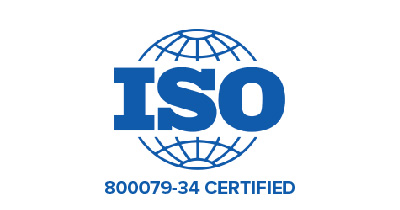Radio Frequency Identification (RFID) is a form of wireless communication that uses radio waves to uniquely identify and track objects using a tag and a reader. Unlike barcode tracking, RFID tag data can be read outside the line-of-sight and without physical contact between the tag and reader.
RFID technology has rapidly developed since its emergence and the commercial applications are numerous. Organizations can use it to protect and account for people and assets. Toll stations, for example, can use RFID to swiftly process payments at high traffic areas and it can be used to provide a means of access management by using badges that can replace swipe cards.
There are two main types of RFID systems: Passive and Active. There are differences, along with strengths and limitations, between the two types of RFID systems. Both Active and Passive RFID can help protect people and valuable assets, and both function similarly in that they use radio frequencies to communicate information between the device and the reader.

Power and operating differences
Passive RFID does not have a local power source or a built-in battery. It is powered by electromagnetic energy transmitted from an RFID reader. The power from
the reader induces a current in the antenna that is affixed to the tag. Passive tags wait for a signal from the reader, and therefore need to be within close enough range to be activated. Passive RFID tags are simple in design and are often made up of two main components – the tag’s antenna and the microchip or integrated circuit (IC).
Active RFID systems use an internal power source (battery) to continuously broadcast their location. In this way, Active RFID tags serve as “beacons” to track the real-time location of assets. Active RFID tags operate using a higher radio wave frequency and this provides for a greater operating range so that the tags can be read over longer distances. Relying on three essential parts – the reader, antenna and tag – the system communicates in real-time to facilitate location identification and alerts when a button is pushed.
Applications and specific uses
Given there is no internal power source, passive RFID tags are often used for applications such as access control, race timing, supply chain management and file tracking. By design, Passive RFID tags are smaller, thinner and are of a more flexible composition than Active RFID tags, in addition to lasting upwards of 20 years or more. The slightly lower price point per tag can (in some cases), make it a more affordable solution for some end users, depending on the overall use case.
Thanks to their internal battery power, Active RFID systems are used mainly for their ability to provide real-time location, tracking and detection of assets, and personnel accountability. Although they are typically more expensive than passive tags, they can also be read at a much longer range, as well as in close proximity to a location, so the return on investment in terms of theft prevention, personnel visibility, and productivity improvements are second to none.
Active RFID Advantages
- Longer range data read (up to 300 ft, and in some cases/environments up to 1,000 ft)
- Has memory and can store data
- Reduced power use
Active RFID Drawbacks
- Higher cost per tag
- Requires changing of batteries
Passive RFID Advantages
- Small and light weight
- Inexpensive per unit
- Resistance to hard environments
Passive RFID Drawbacks
- Limited amount of data storage
- Limited read range (less than 20 feet)
- Limited and/or no functionality amidst the presence of liquids
Which solution is right for you?
Each RFID option has its own qualities and the choice of technology depends on a number of factors – the desired application, the amount of wear and tear on the devices, the desired price point and, importantly, the range at which data can be transmitted (and how much information can be stored and transmitted).
So, how do you know which type of RFID technology to choose for your desired needs?
7 questions to ask yourself before you begin planning for RFID technology
1. How widespread will the technology be deployed (do I need a larger quantity of devices)?
2. What is most important to you – price point or the quality of the product?
3. Will the technology be deployed outdoors?
4. Will the technology have to withstand extreme temperatures, like heat and/or freezing?
5. Will the instruments be submerged in water, or exposed to rain or snow?
6. Does the device have to be a specific size? There are many to choose from.
7. What is the material of the asset you are monitoring and does this affect the options of tag types that can be used?
Book time with a Guard RFID Expert to learn more about Active RFID and our RTLS tags.


